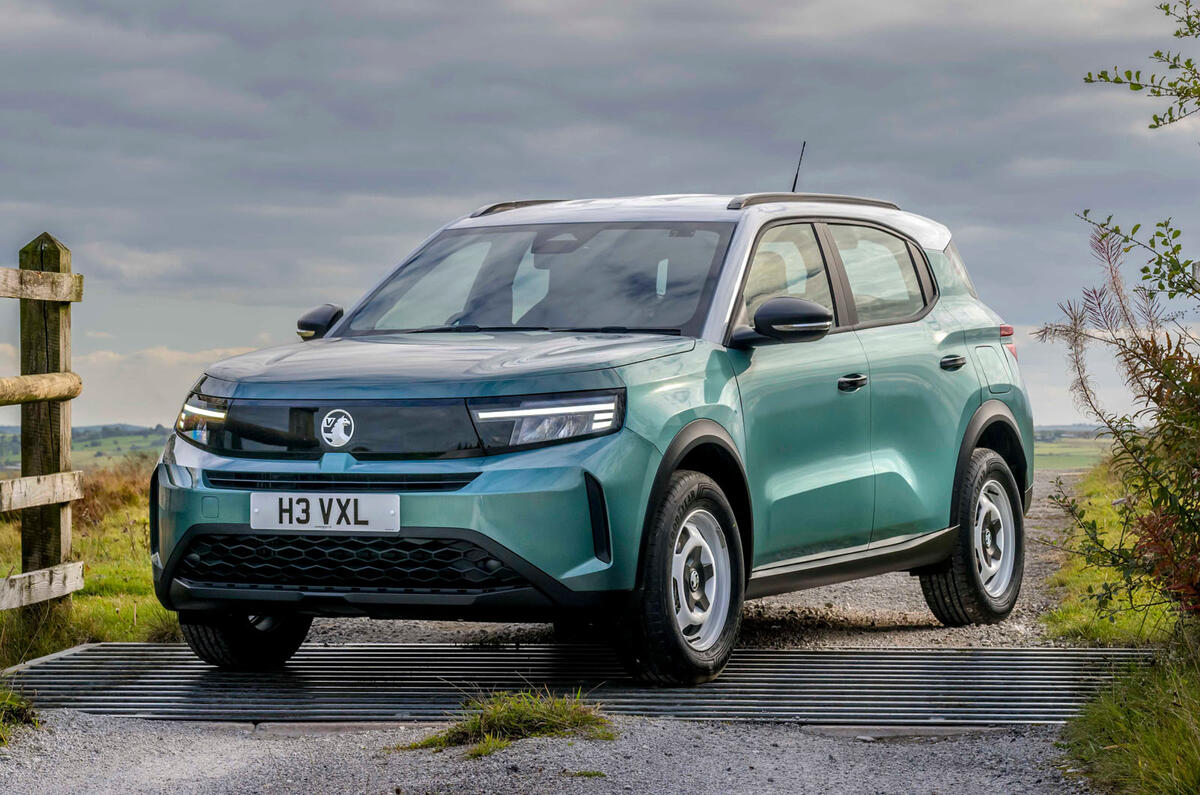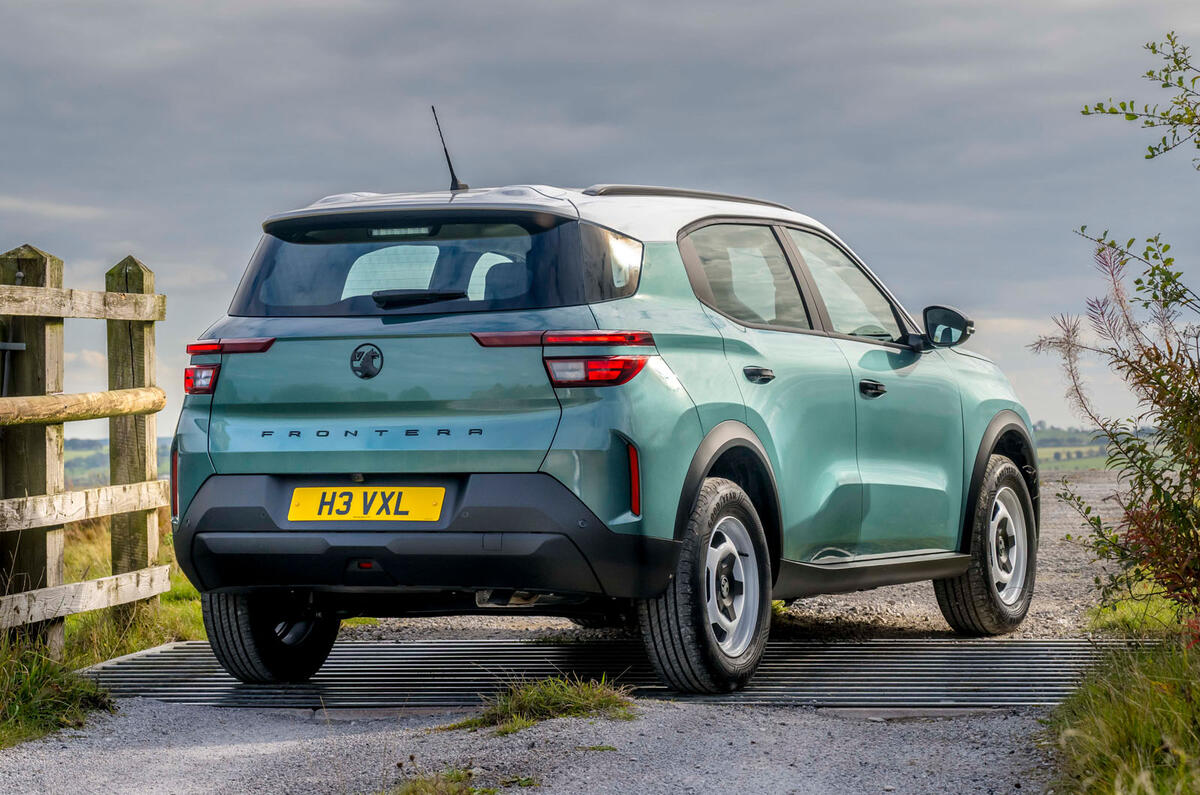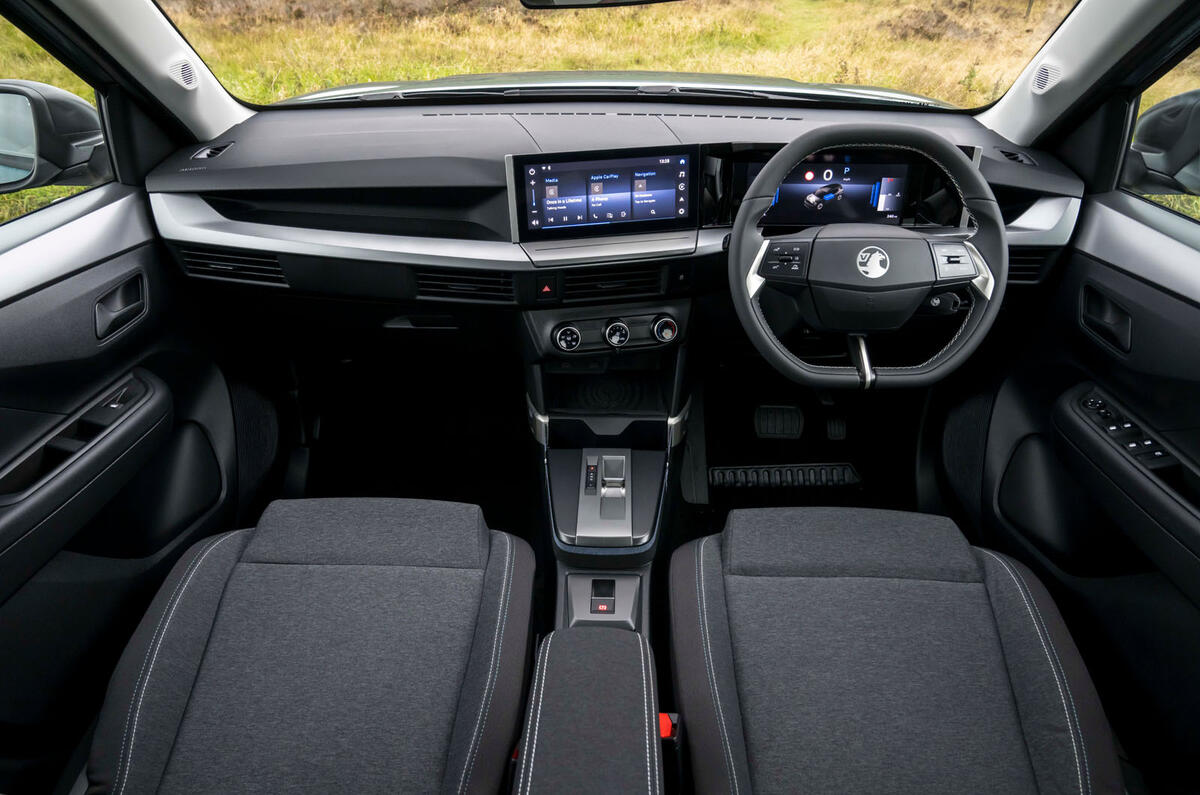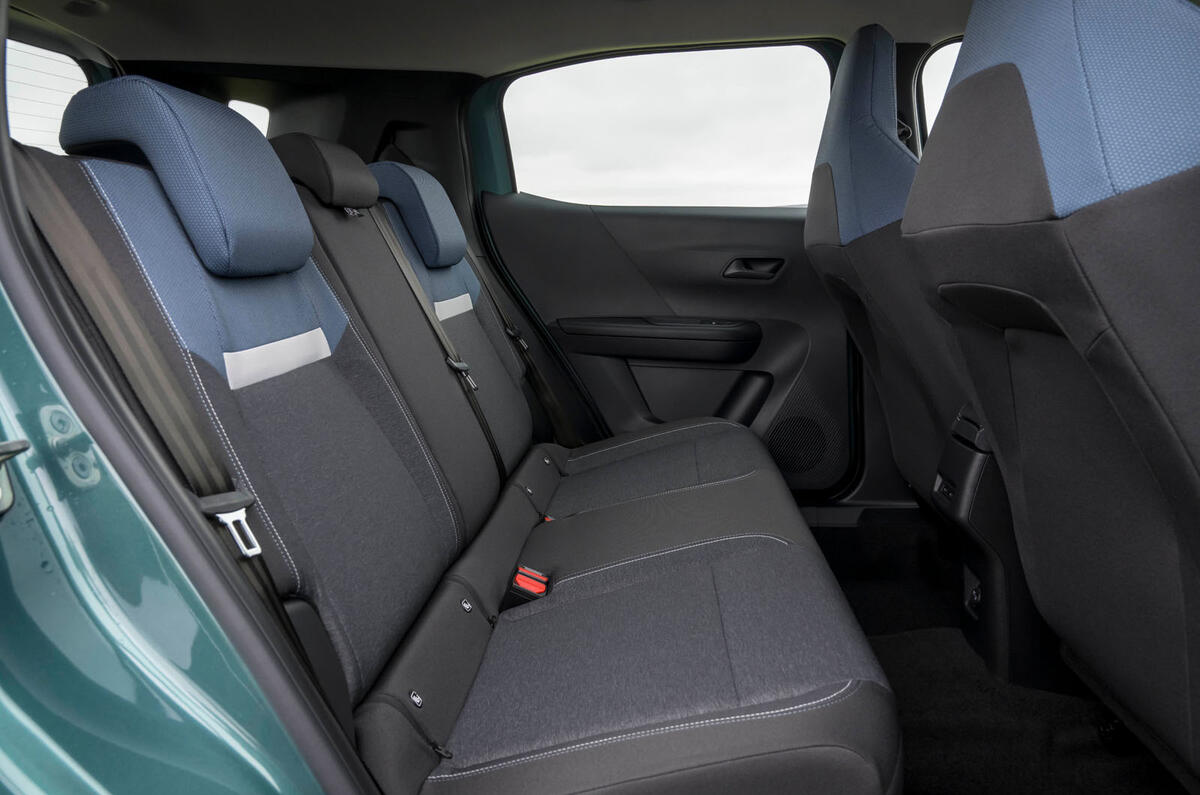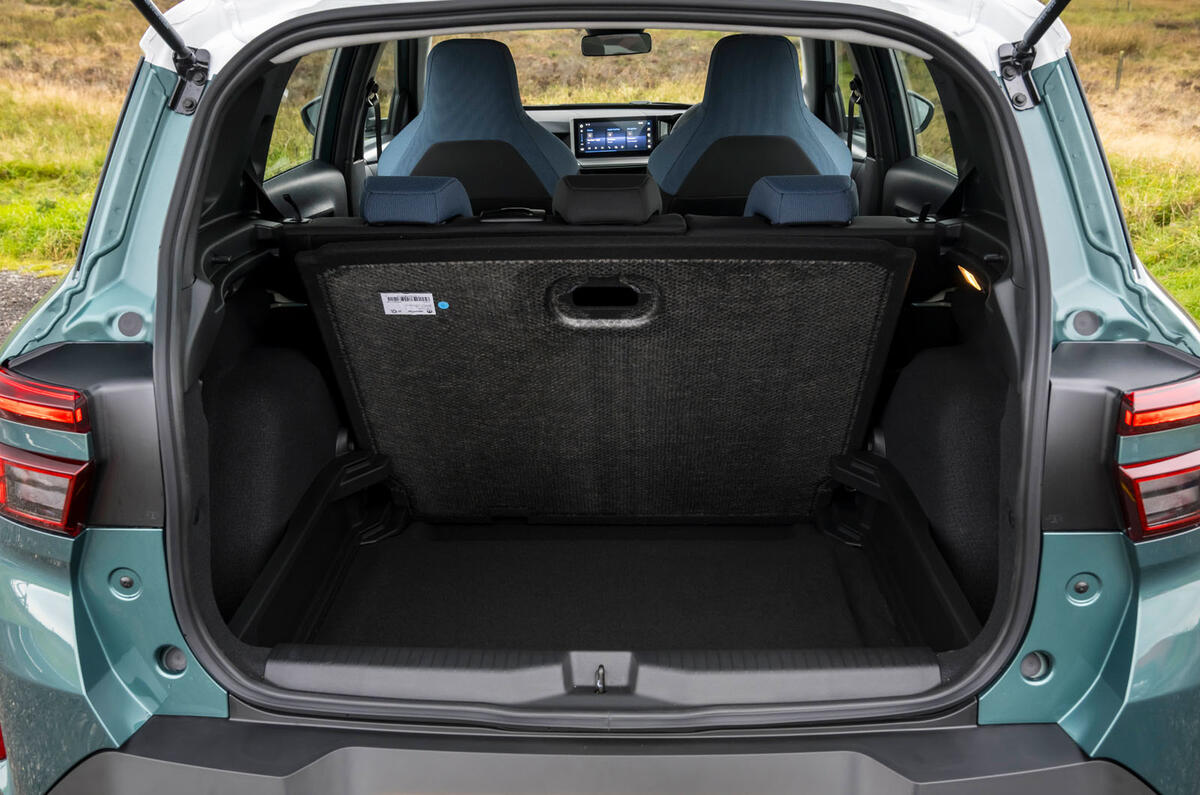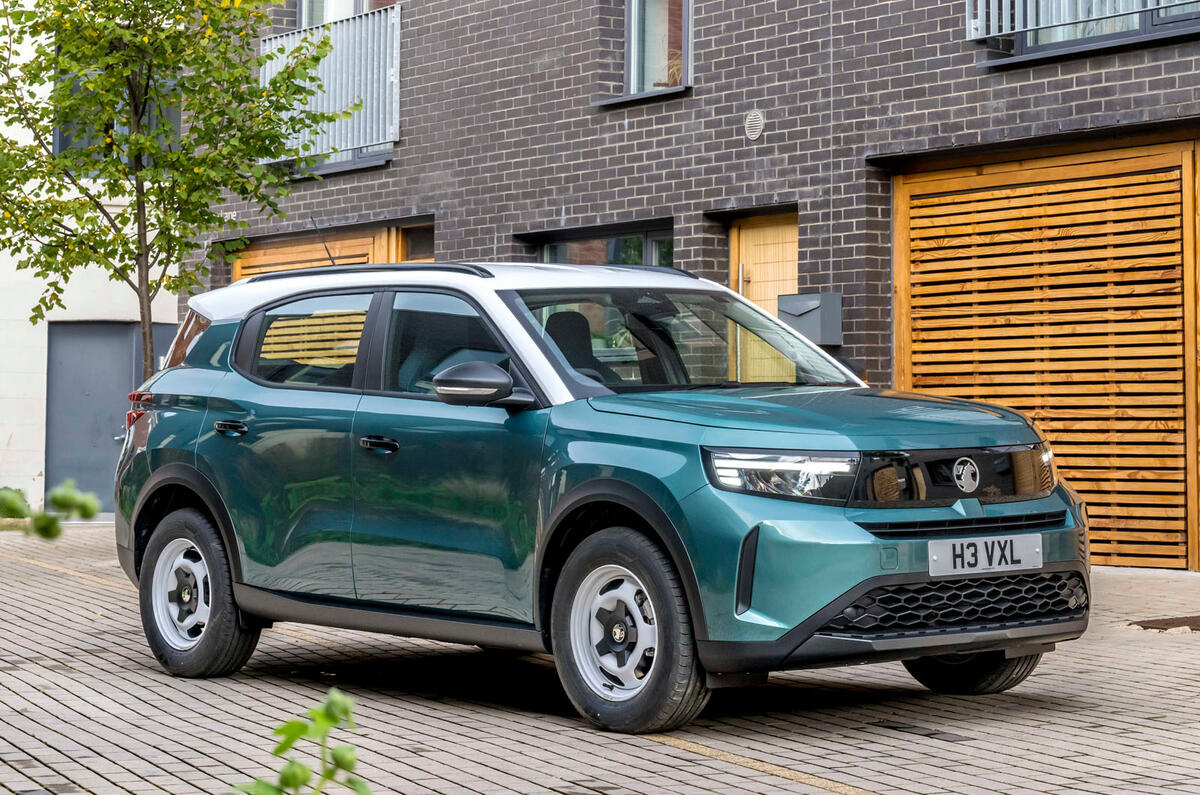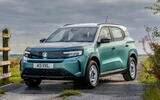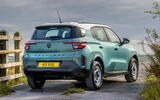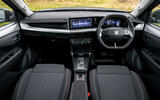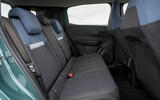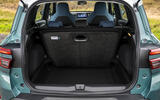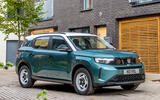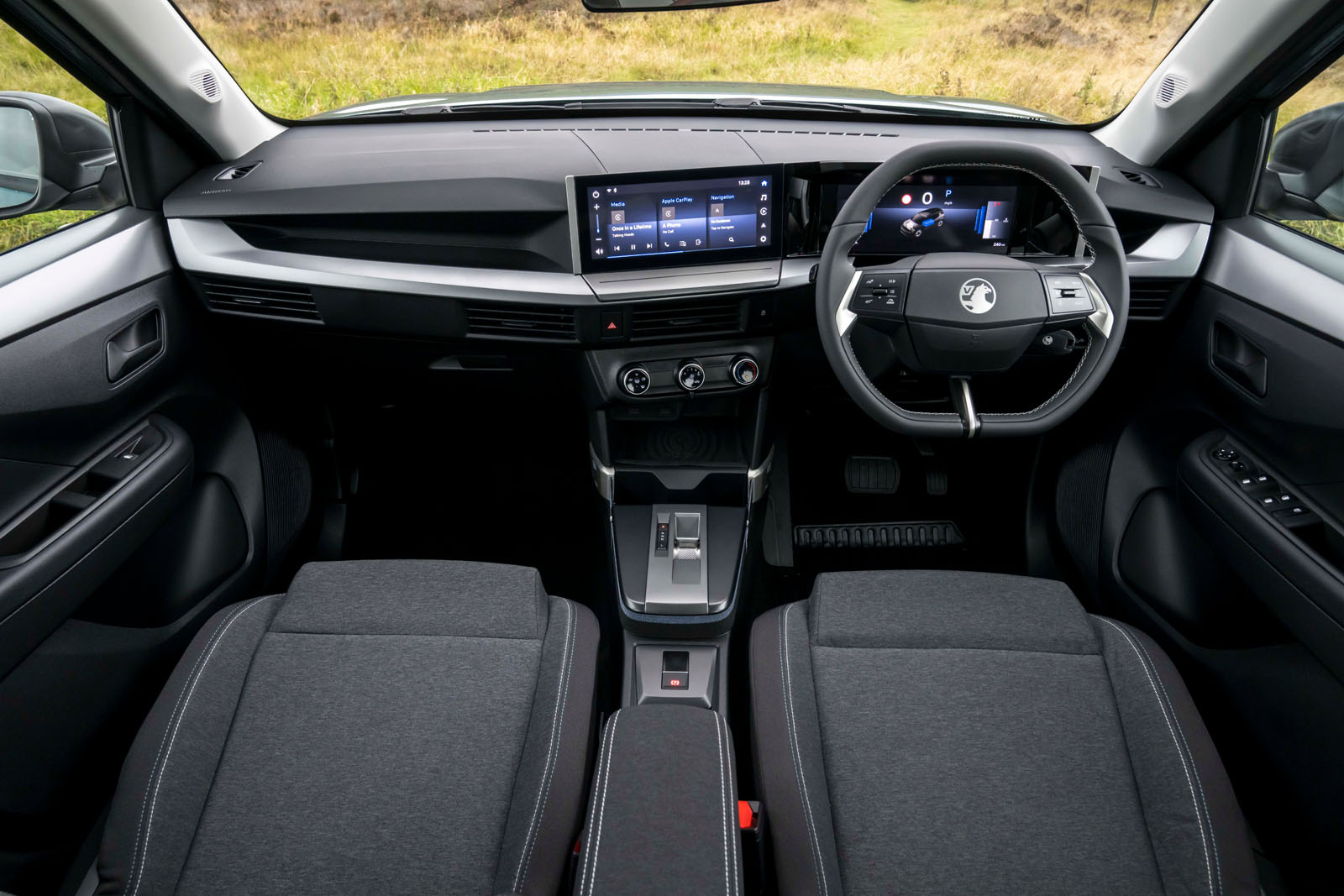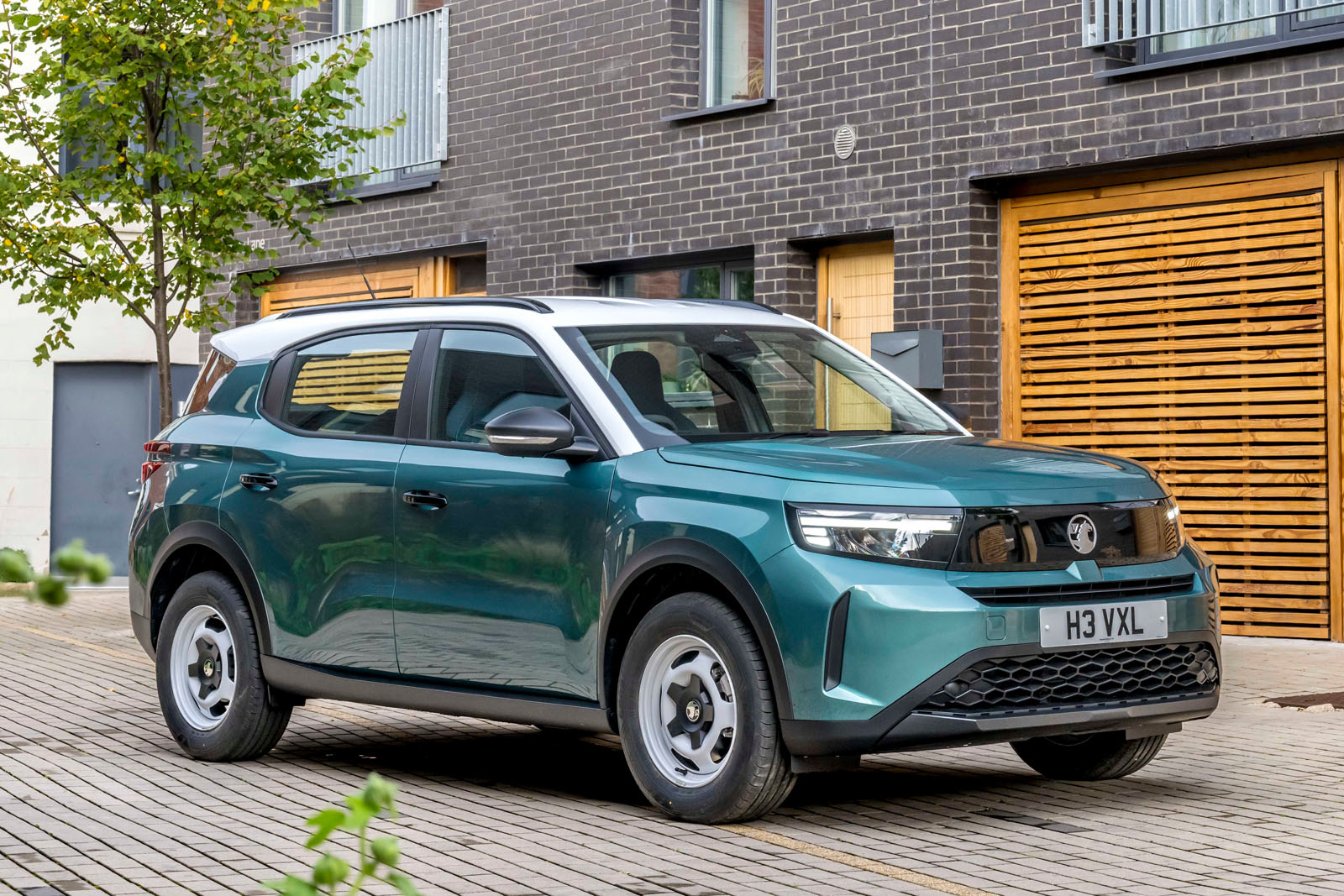The Frontera Hybrid is pleasingly spacious and comfortable, as you would hope for a family SUV in this class.
Step inside and the concessions needed to hit its aggressive price point are revealed: the plastics feel quite low-rent and there are lots of different shades and textures of black.
The GS and Ultimate trims don’t provide enough of an improvement, so if you can live without a heated seat or steering wheel, stick with Design and save a few grand.
The trade-off for mediocre materials is a good kit list, including two 10.0in screens (one for instruments, the other for infotainment) with clear graphics and fast responses to inputs. They also have Apple CarPlay and Android Auto.
There are physical climate controls and everything feels well built.
Other than value, the Frontera’s major attribute is its practicality. It’s big enough in the back for adults to sit comfortably and there are plenty of storage cubbies dotted around.
The boot is good too, being slightly larger than that in the Astra.
Because it doesn’t have a big underfloor battery taking up space, the Hybrid has one important USP over its Electric sibling: you can get it with seven seats. It’s a £550 option, is available on GS trim only and makes this car a genuine rival for the Dacia Jogger.
It’s a good selling point that will be welcomed by some, although given the extra two seats fold up from the boot, the usability of the third row is likely to be limited. All the Hybrid cars we've been able to test so far have been five-seaters, so we’ve yet to squeeze into the back and test them out in person.



